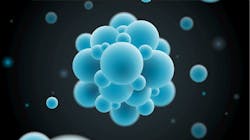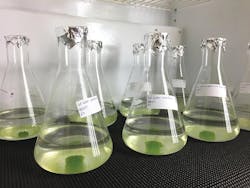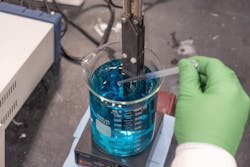Getting to the cleanest effluent possible
Traditional wastewater treatment methods use physical, chemical, and biological processes to remove contaminants and produce treated wastewater that is safe enough for release into the environment and, in some cases, for reuse. But what about the tiny particles left behind? New research aims to collect and treat microscopic contaminants that traditional treatment methods may leave behind. Here are a few ways forward-thinking researchers are looking to improve the way we treat our wastewater.
Green Algae for Good
While algae is not typically considered beneficial, research from the Desert Research Institute (DRI) in Las Vegas may change that. There, scientists found that a common species of freshwater green algae, called Nannochloris, was shown to remove certain endocrine-disrupting chemicals (EDCs) from previously treated wastewater.
“This type of algae is very commonly found in any freshwater ecosystem around the world, but its potential for use in wastewater treatment hadn’t been studied extensively,” said DRI researcher Xuelian Bai, Ph.D., lead author and assistant research professor of environmental sciences with the Division of Hydrologic Sciences at DRI. “We wanted to explore whether this species might be a good candidate for use in an algal pond or constructed wetland to help remove wastewater contaminants.”
During a seven-day laboratory experiment, Bai and fellow researcher Kumud Acharya, Ph.D., grew Nannochloris algal cultures in two samples of previously treated wastewater collected from the Clark County Water Reclamation District in Las Vegas, and measured changes in the concentration of seven common EDCs.
Yin said the co-catalyst, a powdered metal sulfide, is an inexpensive way to speed up the reaction by helping the ferrous catalyst do a better job and persist in its original form rather than forming the unusable sludge by-product.
Yin is now working to create smaller metal sulfide particles with more surface area to further increase co-catalyst performance.
Diamond Technology
A team from Michigan State University-Fraunhofer USA Inc.’s Center for Coatings and Diamond Technologies (MSU-Fraunhofer) has a viable solution to treat wastewater contaminated with per- and polyfluoroalkyl substances (PFAS) and it’s ready for a pilot-scale investigation. The electrochemical oxidation system uses boron-doped diamond electrodes to break down the contaminants’ strong molecular bonds, cleaning the water while systematically destroying the hazardous compounds.
“EO, or electrochemical oxidation, is a simple, clean and effective method for destruction of PFAS and other co-contaminants as a complementary procedure to other wastewater treatment processes,” said Cory Rusinek, electrochemist at MSU-Fraunhofer. “If we can remove it from wastewater, we can reduce its occurrence in surface waters.”
MSU-Fraunhofer’s EO system has successfully removed PFAS from gallons of tainted water. While many electrodes have been investigated in EO, boron-doped diamond electrodes have shown the most promise for contaminant degradation with a number of studies showing its ability to degrade PFAS.
The EO process systematically breaks down PFAS, transforming it from a hazardous material to carbon dioxide, water and fluoride.
While the technology is being used to treat wastewater and to create safe, dischargeable water, the team believes it’s possible that this process could eventually become a component of a municipal drinking water system. WW
About the Author: Alanna Maya is editor of WaterWorld and Industrial WaterWorld magazines. She can be reached at [email protected].
About the Author

Alanna Maya
Chief Editor
Alanna Maya is a San Diego State University graduate with more than 15 years of experience writing and editing for national publications. She was Chief Editor for WaterWorld magazine, overseeing editorial, web and video content for the flagship publication of Endeavor's Water Group. In addition, she was responsible for Stormwater magazine and the StormCon conference.


